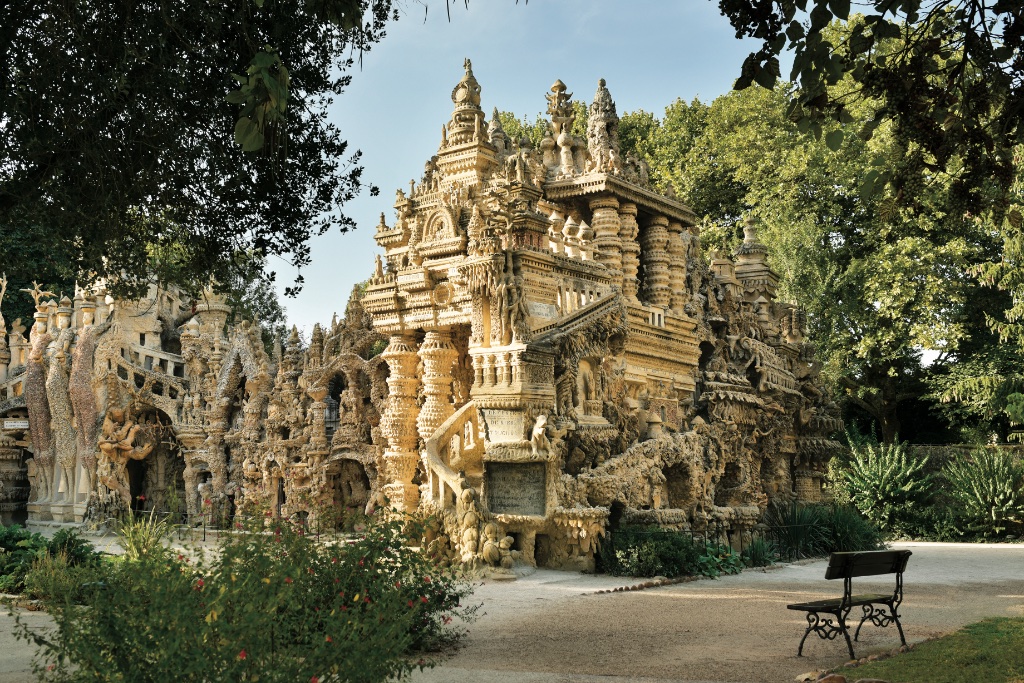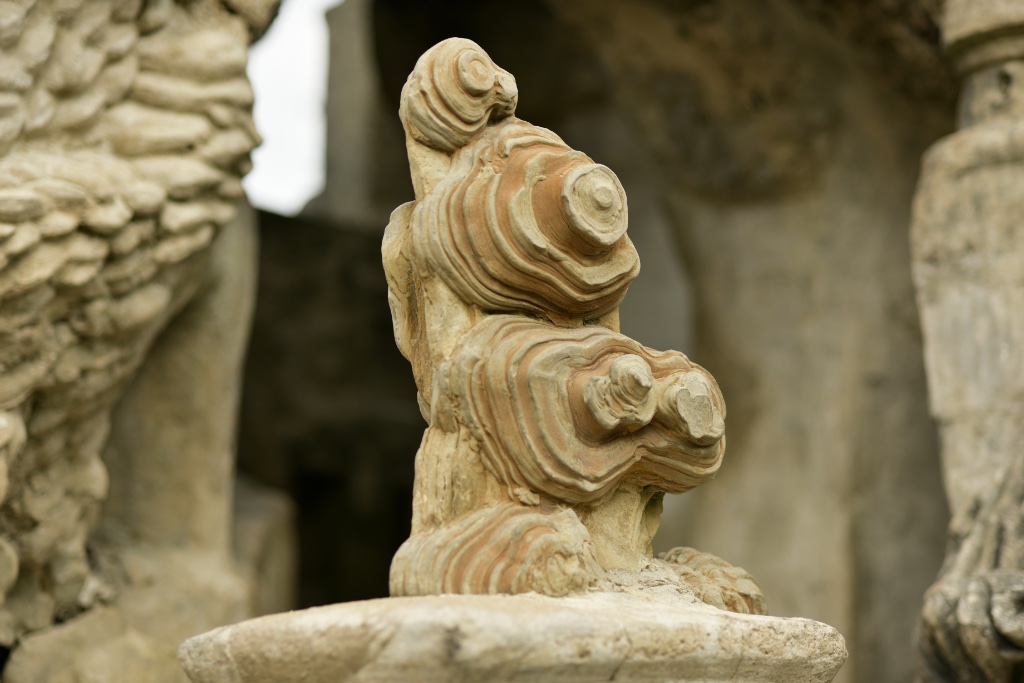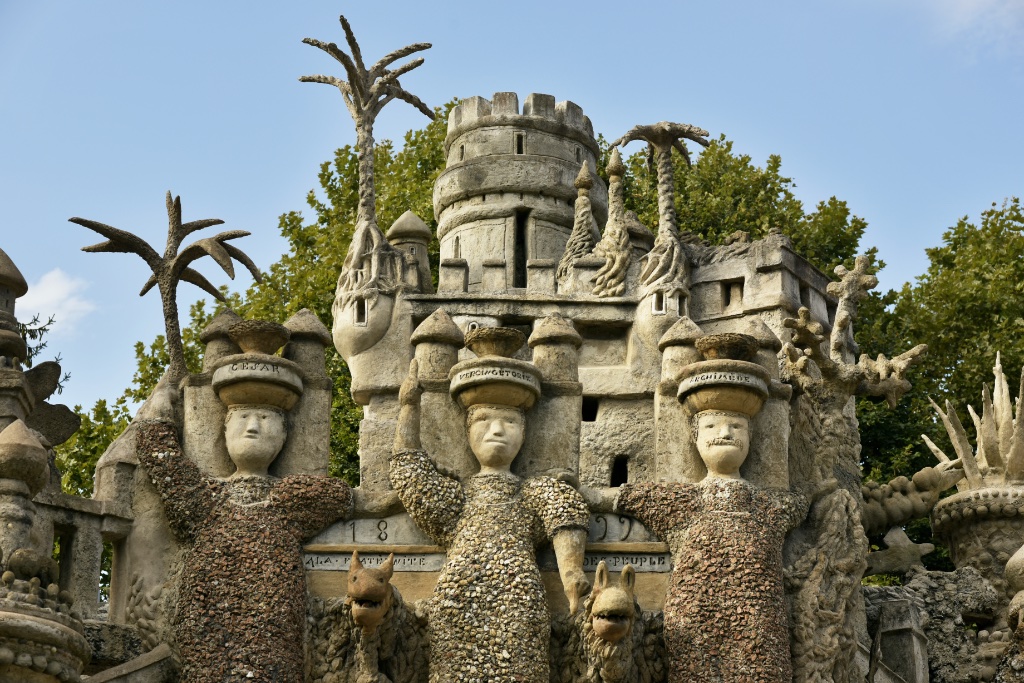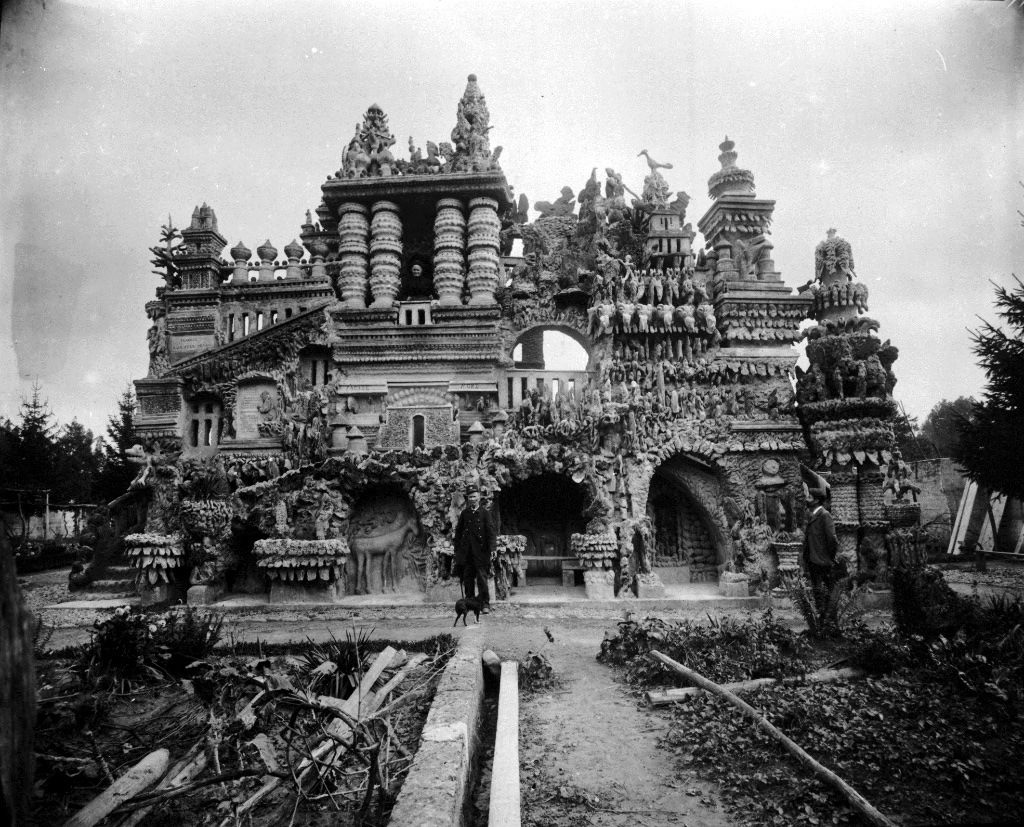
You have probably heard of the Watts Towers in Los Angeles, but have you heard of the Palais Idéal du Facteur Cheval in France? Both are amazing structures, each one built by an ordinary man in the grip of an obsession, but in some ways, Facteur Cheval’s creation is the more astounding one.
Simon Rodia, who spent 33 years building the delicate, mosaic-decorated Watts Towers, was a construction worker and tile mason by trade, so it is not too surprising that he was able to build a viable structure with no training as an architect. The Facteur Cheval (full name: Joseph Ferdinand Cheval, born 1836), as he was known to one and all, was a postman (facteur in French) for 29 years in the town of Hautrives, France.
He delivered the mail on foot (not on a bicycle like Jacques Tati’s postman François in the 1949 film Jour de Fête), as the hilly terrain of his route made a two-wheeler impractical. What is truly amazing about Facteur Cheval is that after walking 32 kilometers (20 miles) or more on his route during the day, often with a basket full of rocks picked up along the way on his back, he would go home and take his wheelbarrow out to collect more rocks, walking a further 10 to 15 kilometers and continuing to work on the construction of the palace by candlelight and oil lamp late into the night. He must have been something of a superman to be able to continue to expend so much energy while sleeping only two or three hours a night. He was indeed a healthy man: he told an interviewer near the end of his life that he ate meat only twice a week, consumed plenty of vegetables and drank only a little wine mixed with water with his meals.

The whole project had actually been inspired by a rock. One day, while walking his route, he nearly fell after stumbling on a large stone and stopped to pick it up. “It was a rock with such a strange shape that I put it in my pocket so I could admire it in my own time,” he said. He later found many more such sculptural rocks and began to plan his ideal palace, dreaming about it as marched over the hills delivering the mail.
Thirsty for knowledge about the world, Facteur Cheval fueled his imagination by subscribing to various magazines, through which he traveled the world and saw images of faraway pieces and their monuments. Thanks to the magazines, this man who never left the Drôme department of France where he was born and who quit school at the age of 12 was able to incorporate into his palace references to all the major cultures and religions of the world. The palace, built of rocks cemented together with lime, has a mosque and a synagogue, for example, and also many texts, including poetry and quotations. One of my favorites is his inscription, “A la source de la vie, j’ai puisé mon génie” (“I drew my genius from the source of life”). The Palace also teems with decorative flourishes and sculptures of humans and animals. There are stairways to terraces and dark passageways, all scrupulously decorated. The only part of his dream he was unable to realize was to have fountains throughout the palace; the necessary hydraulic system was never built.

From its appearance, one might think that the palace grew organically, but in fact, Facteur Cheval had sketched out his plans in advance. In the small museum next to the palace, visitors can see a reproduction of a detailed plan for it, probably dating from 1880.

Facteur Cheval was a thorough man. He opened his palace to the public in 1905 while continuing to work on it and put the finishing touches to it in 1913, when he was 83 years old. He also built his own tomb in the local cemetery in the same style. He then set about promoting the palace, making a set of postcards to publicize it. At one point, he even filed a lawsuit to protect his right to images of the palace.
The Ideal Palace had plenty of famous fans – including Picasso (who advised his friends to stop there on the way to the South of France), photographer Willy Ronin and poet Pablo Neruda, but not everyone was enthralled with the postman’s creation. Some neighbors forbade their children to go near what they called the “Palais du Fou” (Madman’s Palace). British photographer Cecil Beaton thought it was a depressing mess and likened it to a pile of sausages. For most people, however, the palace is a source of wonderment.

It has a museum and a boutique, and outdoor concerts are held on the grounds in the summer. It also has a temporary exhibition space to showcase contemporary art and music. The current show, “Une Maison Lointaine” (“A Faraway House,” through March 28, 2023), is a room-sized installation by French-American artist Martine Aballéa. In the center of the room, papered with Aballéa’s photos of a forest, is a tiny black house outlined with strips of LED lighting. Visitors can peer through the many windows to see the monkish furnishings: a narrow bed made up with white sheets and a small lamp on a bedside table. The simplicity of this tiny house is a perfect counterpoint to the baroque excessiveness of Facteur Cheval’s Ideal Palace.
Favorite